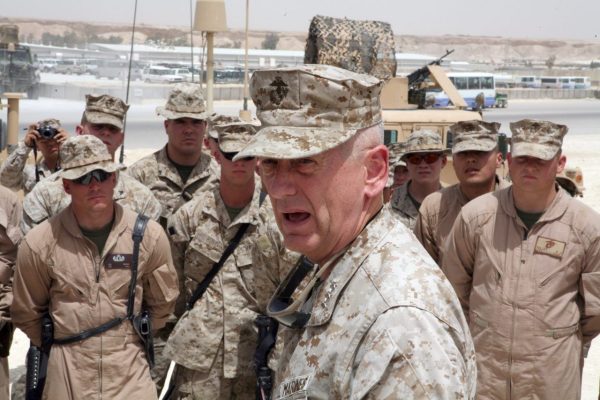Defense Secretary James Mattis made headlines in June when he told the Senate Armed Services Committee that the United States was not prevailing against the Taliban. “We are not winning Afghanistan right now. And we will correct this as soon as possible,” Mattis testified.
Five Steps for Winning in Afghanistan
In August, President Trump announced a new strategy with five main elements:
- Give DOD authority to increase troop level.
- Give military commanders the autonomy to make military decisions based on military needs. Stop micromanaging from Washington.
- Try to bring the Taliban to negotiate. A key part of this is to set no date for troop withdrawal.
- Pressure Pakistan to stop harboring terrorists, by threatening to cut off billions of aid dollars and by increasing cooperation with India.
- No more focusing on nation-building and democracy promotion – just winning. “Our troops will fight to win. We will fight to win,” Trump said. “From now on, victory will have a clear definition, attacking our enemies, obliterating ISIS, crushing al Qaeda, preventing the Taliban from taking over Afghanistan and stopping mass terror attacks against America before they emerge.”
Rules of Engagement
Each of those goals is important, but this article deals with the second: the rules of engagement. President Trump has made it clear to his military commanders that his goal is to “kill terrorists.” He also made it clear that it’s up to them to choose how to achieve that goal.
President Obama severely limited the options available to commanders and troops. He famously said, “I think that I’m a better speechwriter than my speechwriters. I know more about policies on any particular issue than my policy directors. And I’ll tell you right now that I’m gonna think I’m a better political director than my political director.”
Obama’s actions regarding military policy suggested that he felt the same way about his generals. He dictated rules of engagement so restrictive that they endangered the lives and safety of American troops.
The Perspective of a Wounded Marine NCO
I had a long conversation with a young Marine NCO during a domestic flight in 2010. He was in a body cast because his back was shattered by the concussion blast of an IED. He was home temporarily for advanced medical treatment, but was eager to go back to be with his troops.
What was on his mind was the greatest immediate threat to his fellow Marines: the rules of engagement
I thanked him for his sacrifice, and told him I had a family member deployed to Afghanistan; that my father-in-law, and his father before him, had been Marines, and how proud I am of them all. I then just let him talk, wondering what was on his mind. What was on his mind was the greatest immediate threat to his fellow Marines: the rules of engagement, or ROE’s.
He told me that they were fighting without heavy machine guns, because the ROE’s required them to have visual contact with an enemy before pulling the trigger. They could not use mortars or artillery, even though their enemies were using them. They were fighting without close air support because the ROE’s were designed to prevent civilian casualties at all costs – even the cost of American lives.
Slap Rounds Against Infantry
Because the Taliban didn’t have to worry about American air power, they turned their anti-aircraft guns to a devilish use. They placed them behind the mud walls of housing compounds, aiming them horizontally at our infantry.
The ROE’s dictated that housing compounds were off-limits to our forces, even if they were taking fire from them, and the enemy knew it. They loaded the anti-aircraft weapons with Russian “slap rounds,” incendiary rounds that hit a target and burst into thousands of pieces of white-hot shrapnel. Imagine their effect on a detachment of human beings. My friend said he had never seen so many slap rounds in one place before.

Succeeding in clearing the area brought even greater danger to our forces. Before the Taliban surrendered an area to our troops, they locked down its coordinates with GPS receivers, so they could then shell it with pinpoint accuracy. Our forces were not allowed to use mortars or artillery to return fire. They were forced to rely on their rifles alone, which could not reach the source of the enemy mortars.
“We could clear out the entire Taliban, while they’re all in one place, in a matter of days, if they let us.”
“We don’t understand why they won’t let us just go in there and fight. We could clear out the entire Taliban, while they’re all in one place, in a matter of days, if they let us. Why are they sending us in there if they don’t want us to fight? Why does our government care more about the lives of our enemies than ours?”
Regional experts may say what they like about the long term prospects for peace in Afghanistan. News analysts may deride the President’s plan for lacking specifics. But the new rules of engagement will save American lives, take the lives of terrorists, and end the grinding losses of the past eight years. President Trump is right: let the commanders do what they know. Nobody cares more about winning in Afghanistan than they do.
















